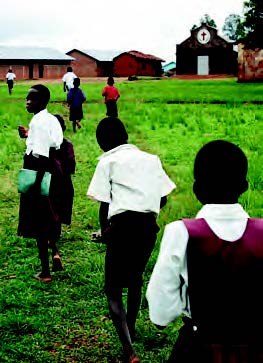Uganda: Rebounding From Conflict
 After 20 years of internal conflict, Uganda is placing a growing amount of emphasis on its elementary and secondary education programs. Giving girls an equal opportunity to excel is a big part of the plan.
After 20 years of internal conflict, Uganda is placing a growing amount of emphasis on its elementary and secondary education programs. Giving girls an equal opportunity to excel is a big part of the plan.
Two years ago, Uganda initiated an educational experiment unique to the African continent: It offered all of its children free secondary education in addition to seven years of free primary education. Prior to 2007, families paid an average $130 in annual fees for each child to attend secondary school, a Reuters news report says.
“I think Uganda has been brave and progressive in opening up its education system—given the high cost of this move,” says Jill Sperandio, an assistant professor of education at Lehigh. The Universal Secondary Education program was estimated to cost $17.15 million in 2007 alone.
As a result of the program, more children —especially girls— are attending secondary schools, explains Sperandio, who taught in Ugandan schools in the 1970s. Later she returned to the East African country to write her dissertation on the experiences of girls in secondary schools and women leading schools.
From 2000 to 2007, the percentage of Ugandan girls enrolled in schools compared with those not attending school lagged behind their male counterparts, according to UNICEF trend data. Often Ugandan families with limited resources sent their boys to school while requiring their girls to assist with housework.
Sperandio notes that Uganda's more open education system has now removed some of the economic barriers that prevent women from receiving more advanced education and thus attaining positions of leadership.
“Uganda has been in the fore of African nations who recognize their need to improve women's participation in education and leadership," say Sperandio. “By increasing girls’ access to education, it continues to move toward a more gender equal society.”